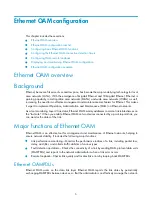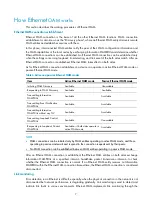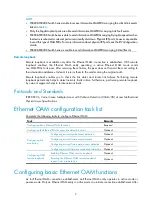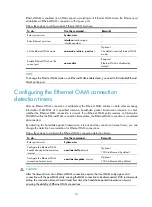
1
High availability overview
Communication interruptions can seriously affect widely-deployed value-added services such as IPTV
and video conference. Therefore, the basic network infrastructures must be able to provide high
availability.
The following are the effective ways to improve availability:
•
Increasing fault tolerance
•
Speeding up fault recovery
•
Reducing impact of faults on services
Availability requirements
Availability requirements fall into three levels based on purpose and implementation, as shown in
Table 1
Availability requirements
Level Requirement
Solution
1
Decrease system software and
hardware faults
•
Hardware: Simplified circuit design, enhanced
production techniques, and reliability tests.
•
Software: Reliability design and test
2
Protect system functions from being
affected by failures
Device and link redundancy and switchover
3
Enable the system to recover as fast
as possible
Fault detection, diagnosis, isolation, and recovery
technologies
The level 1 availability requirement should be considered during the design and production process of
network devices. The level 2 availability requirement should be considered during network design. The
level 3 availability requirement should be considered during network deployment, according to the
network infrastructure and service characteristics.
Availability evaluation
Mean Time Between Failures (MTBF) and Mean Time to Repair (MTTR) evaluate the availability of a
network.
MTBF
MTBF is the predicted elapsed time between inherent failures of a system during operation. It is typically
expressed in hours. A higher MTBF means a higher availability.
MTTR
MTTR is the average time required to repair a failed system. MTTR in a broad sense also involves spare
parts management and customer services.














































